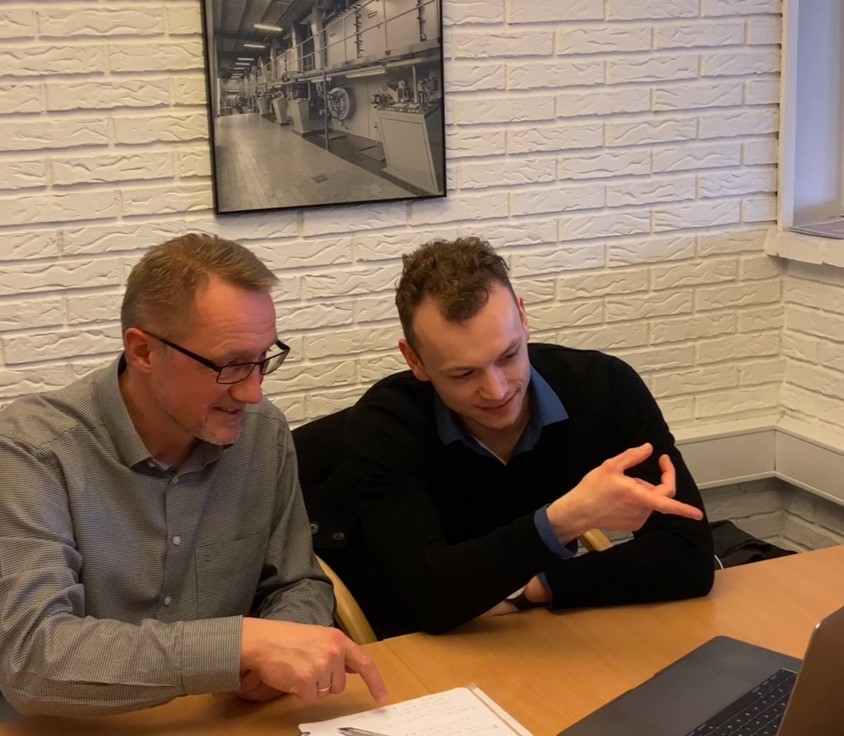One of CITIES’ demo projects is to develop an optimization method for the combined heat and power production planning in district heating systems and apply it to a real-world demo-case.
The idea is to improve bids for selling and buying electricity in power markets- and in the end to automate the bidding.
Assistant Professor Daniela Guericke, Postdoc Ignacio Blanco at DTU Compute together with Anders Andersen, EMD, have developed novel methods for the operation of district heating systems co-generating heat and power in 2018. Research Assistant Amos Schledorn from DTU Compute has now further developed the models.
Before the corona crisis closed Denmark Amos visited Middelfart Fjernvarme in Fyn to meet the operations manager, Jesper Skov, and learn how electricity market bids for combined heat and power generation are generated in Middelfart. Amos also showed how far his own model has been developed and tested it with new data from the district heating company.
– It was very nice to visit Middelfart Fjernvarme and see how things are working in the real world. Now, I am working on integrating the feedback from Jesper, so we can develop a truly useful method and maybe, district heating companies could do better with a model like ours, Amos says.
Two typical networks of district heating
Middelfart Fjernvarme has two district heating networks in Nørre Aaby and Ejby. The networks are typical networks of district heating in Denmark, which makes them great testing sites for our model, Amos says.
– The plan is that the algorithm behind the model generates the bids as in the real world – like the operations manager Jesper is doing on paper. Our idea is that the method will automate electricity market bidding for combined heat and power generation and ideally, will improve both profitability for district heating companies and flexibility in the national power system. That will also allow us to evaluate potential investments in the district heating network under realistic operational strategies.
– Jesper Skov uses also an online tool, but he has to do that by hand. It would be nice if you could just insert your data once, and the computation of power market bids is automated, Amos says.
In addition, Middelfart Fjernvarme is happy to help:
– It has been interesting and informative to try to help DTU to create a model to automatize the biddings in the power-market. If they succeed, it will be a very useful software for the district heating companies for optimizing their biddings, Jesper says.
Amos continues his work at DTU Compute for the next months. When the model is ready, further software development will be required to integrate the model into a larger toolbox.
Learn more about the demo case here: http://smart-cities-centre.org/wp-content/uploads/Demo-project_Operational-Planning-District-Heating.pdf

